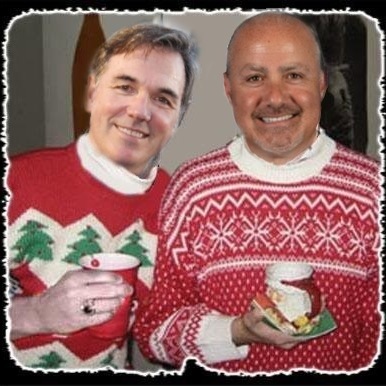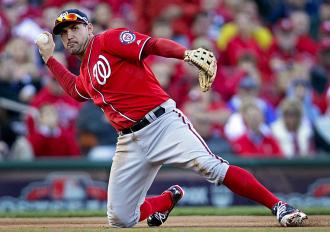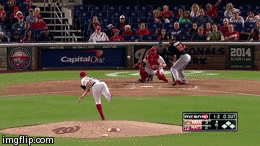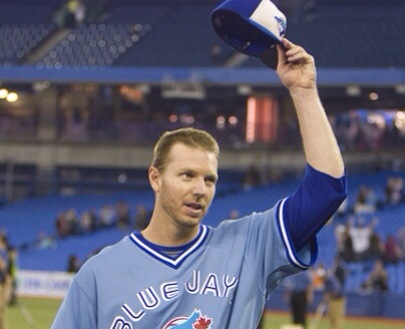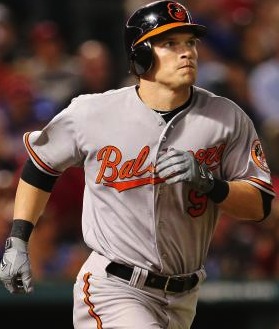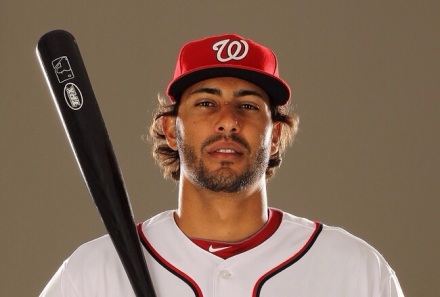 For the first time in the storied history of the New York Yankees, they let one get away. Robinson Cano, Yankee starting second baseman for the last nine years and an all star for five of those, has jumped ship for the Mariners of Seattle. Cano, lured to the Pacific Northwest by the lofty sum of $240 million, is the first free agent to ever leave the Bronx Bombers to sign a nine-figure contract elsewhere — for once, the Yankees were hoisted by their own petard. But despite losing Cano, the Yankees were just as active, and as willing to spend, as they had been in several years; in the absence of Cano, they have added centerfielder Jacoby Ellsbury (7 years, $153 million), catcher Brian McCann (5 years, $85 million), and right fielder Carlos Beltran (3 years, $45 million), as well as re-signing starter Hiroki Kuroda to a one year, $16 million. And they still have money to burn — even if the team wants to stay under the $189 million luxury tax, they can still afford to spend another $20 million (and that’s assuming Alex Rodriguez’s salary stays on the books). They are expected to be in on every remaining starting pitcher on the market, from Ervin Santana to Japanese megastar Masahiro Tanaka. So are the Yankees — both now and in the future — better off sans Cano?
For the first time in the storied history of the New York Yankees, they let one get away. Robinson Cano, Yankee starting second baseman for the last nine years and an all star for five of those, has jumped ship for the Mariners of Seattle. Cano, lured to the Pacific Northwest by the lofty sum of $240 million, is the first free agent to ever leave the Bronx Bombers to sign a nine-figure contract elsewhere — for once, the Yankees were hoisted by their own petard. But despite losing Cano, the Yankees were just as active, and as willing to spend, as they had been in several years; in the absence of Cano, they have added centerfielder Jacoby Ellsbury (7 years, $153 million), catcher Brian McCann (5 years, $85 million), and right fielder Carlos Beltran (3 years, $45 million), as well as re-signing starter Hiroki Kuroda to a one year, $16 million. And they still have money to burn — even if the team wants to stay under the $189 million luxury tax, they can still afford to spend another $20 million (and that’s assuming Alex Rodriguez’s salary stays on the books). They are expected to be in on every remaining starting pitcher on the market, from Ervin Santana to Japanese megastar Masahiro Tanaka. So are the Yankees — both now and in the future — better off sans Cano?
First, the present. The Yankees’ weak farm system means they have no internal replacement for their star second baseman, and they just today lost the bidding on Omar Infante, the only capable second baseman on the free agent market. Thus, the loss of Cano means the Yankees have another hole on a team with many question marks, whether they be injury-related (shortstop, first base) or otherwise (third base, see Rodriguez, Alex). But the moves they made this offseason, including a low-profile signing of utility infielder Kelly Johnson (1 year and $3 million for a player 101 wRC+ and 1.2 fWAR in 118 games last year) enables to fill other, more pressing holes. They replaced their offensive black hole at catcher (Yankee catchers had a 61 wRC+ last year) with the best offensive backstop on the market. They added two proven (if aging/injury-prone) players to their outfield, bringing much-needed stability. And because they don’t have to pay Cano, they can afford to add another pitcher to a starting rotation whose surest bet for production right now is either the 38-year old Kuroda or the unproven Ivan Nova. The Yankee strategy sort of resembles Billy Beane’s famous strategy of replacing the production of one great star with contributions from several lesser one. The Yankees [groan] put the money in Moneyball.
But how is the Yankees’ future outlook impacted by their decisions this offseason? The truth is, it doesn’t matter — at least not to the Yankees. The moves the team made this offseason weren’t intended the team’s prospects in the long-term, nor will they. Signing Jacoby Ellsbury doesn’t add depth to the Yankee farm system, and adding Brian McCann doesn’t find the team a replacement for Derek Jeter. But the Yankees have never had to think with the future in mind; they’ve always had enough money to erase their past mistakes. In the 2008-09 offseason, the Yankees spent over $400 million on the contracts of Texiera, C.C. Sabathia, and A.J. Burnett, all of which look like massive failures today. But while every other team (Dodgers notwithstanding) would be crushed under the weight of those contracts, the Yankees have the payroll to reap the rewards (2009 World Series) without having to suffer the consequences. The Yankees were deciding whether they wanted to kick one big can down the road, or three slightly smaller ones. And in the Yankees’ situation, where they can afford to have those cans swept under the rug when the time comes, they made the right choice.


